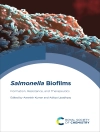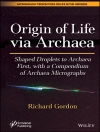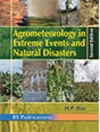In the last few decades, DNA-based tools for the investigation of fungal taxonomy, signal transduction and regulation, differentiation processes and biosynthetic potential have accelerated advances in our understanding of the Mycota. This completely updated and revised second edition presents a selection of exciting issues involving basic and applied aspects of fungal physiology and genetics. In 14 chapters, respected experts provide an overview of traditional, topical and future aspects of basic fungal principles and potential applications in biotechnology. The contributions will bring scientists up-to-date on the latest developments, and help students familiarize themselves with the different topics.
Mục lục
Fruiting Body Development in Ascomycetes.- Fungal inteins – Distribution, Evolution and Applications.- Yeast killer toxins: fundamentals and applications.- The fungal MCC/eisosome complex – an unfolding story.- The Genus Periglandula and its Symbiotum with Morning Glory Plants (Convolvulaceae).- Volatiles in communication of Agaricomycetes.- Endophytic Fungi, Occurrence and Metabolites.- Secondary Metabolites of Basidiomycetes.- Identification of fungicide targets in pathogenic fungi.- Helminth Electron Transport Inhibitors Produced by Fungi.- Cyclic peptides and depsipeptides from fungi.- Polyketide Synthase–Nonribosomal Peptide Synthetase Hybrid Enzymes of Fungi.- Biosynthesis of Fungal Polyketides.- Aspects of the occurrence, genetics and regulation of biosynthesis of the three food relevant Penicillium mycotoxins: ochratoxin A, citrinin and patulin.
Giới thiệu về tác giả
Prof. Dr. Timm Anke
Institut für Biotechnologie und Wirkstoff-Forschung g Gmb H (IBWF)
Kaiserslautern, Germany
Dr. Anja Schüffler
Institut für Biotechnologie und Wirkstoff-Forschung g Gmb H (IBWF)
Kaiserslautern, Germany












